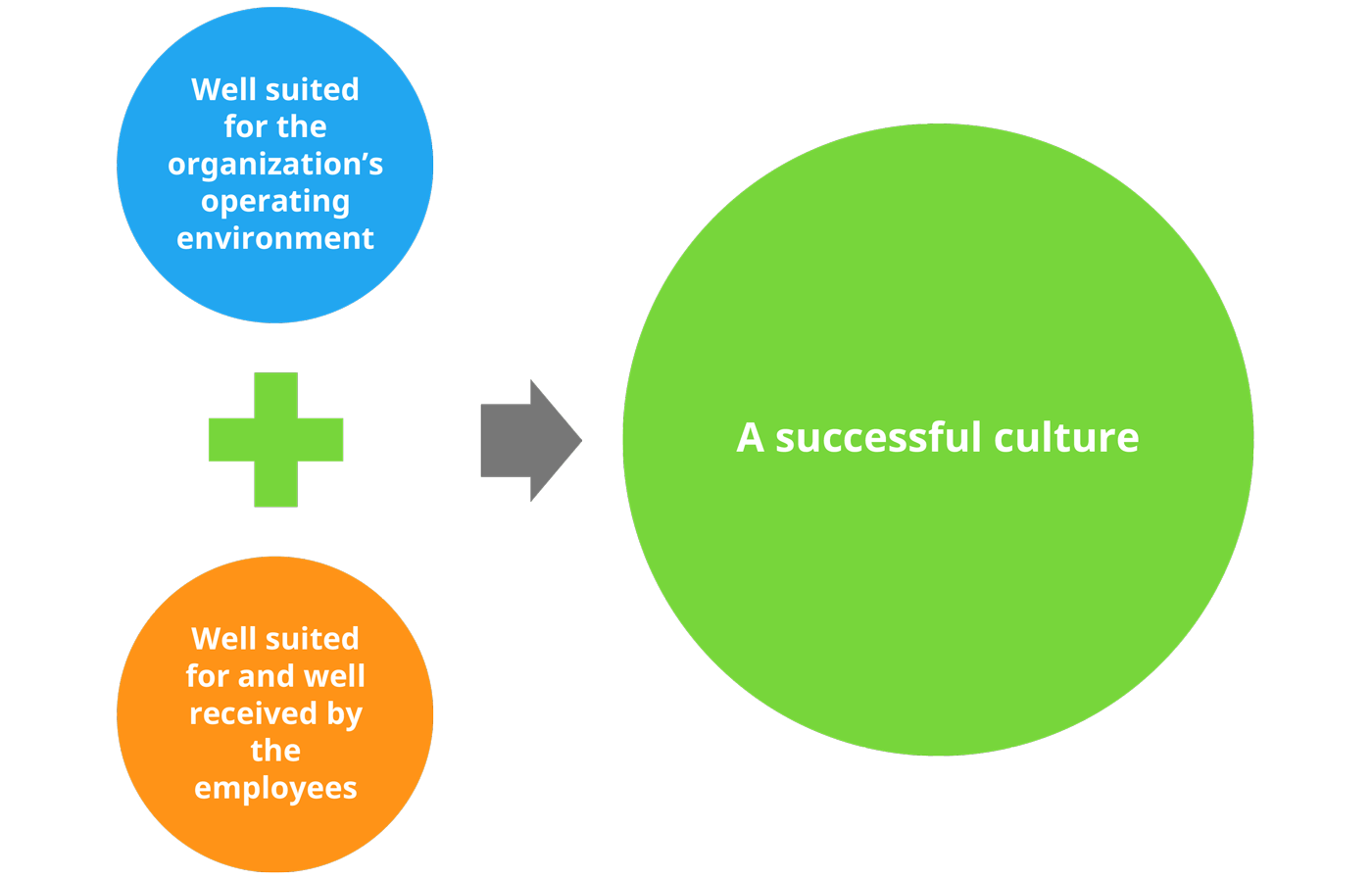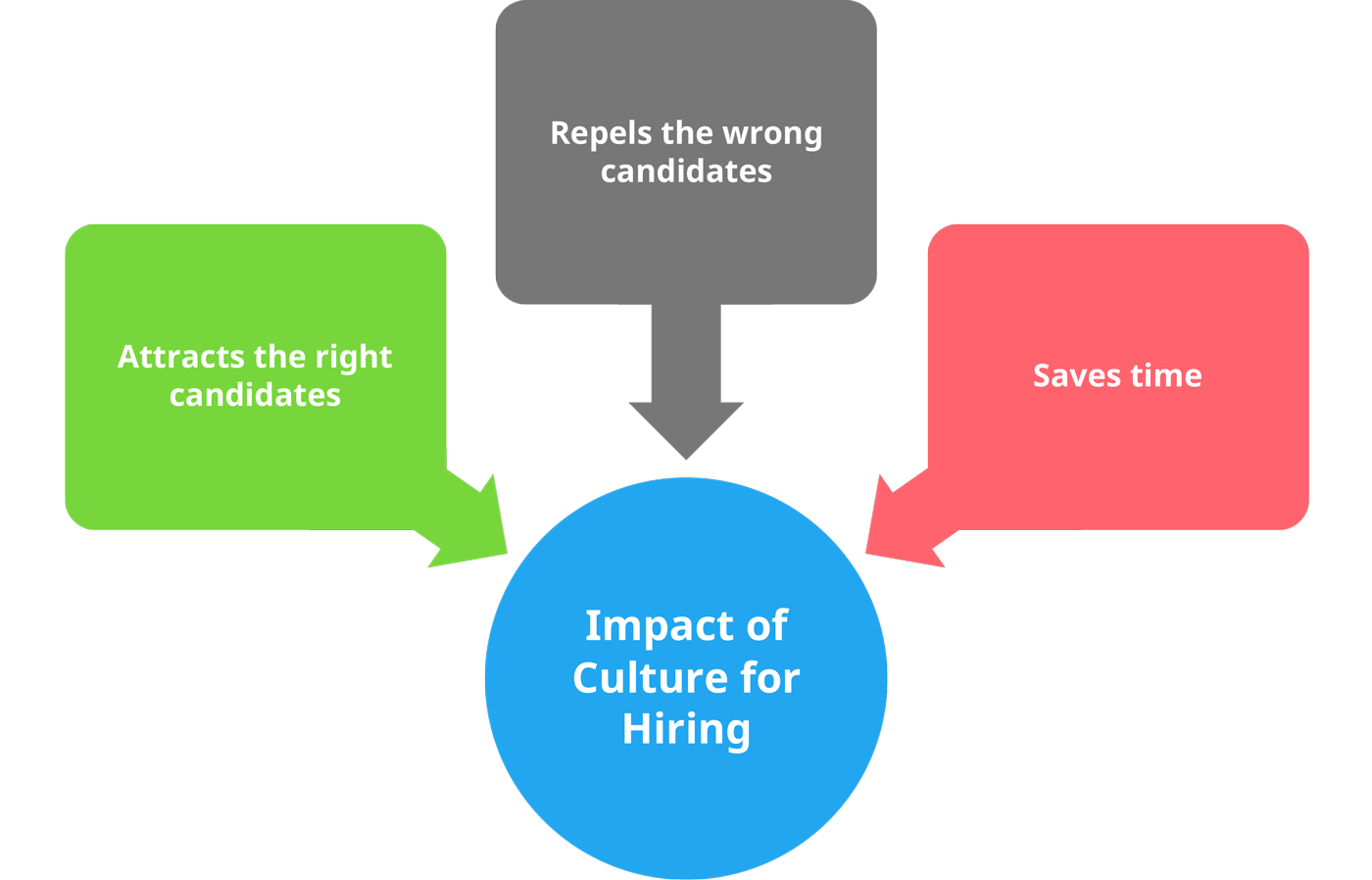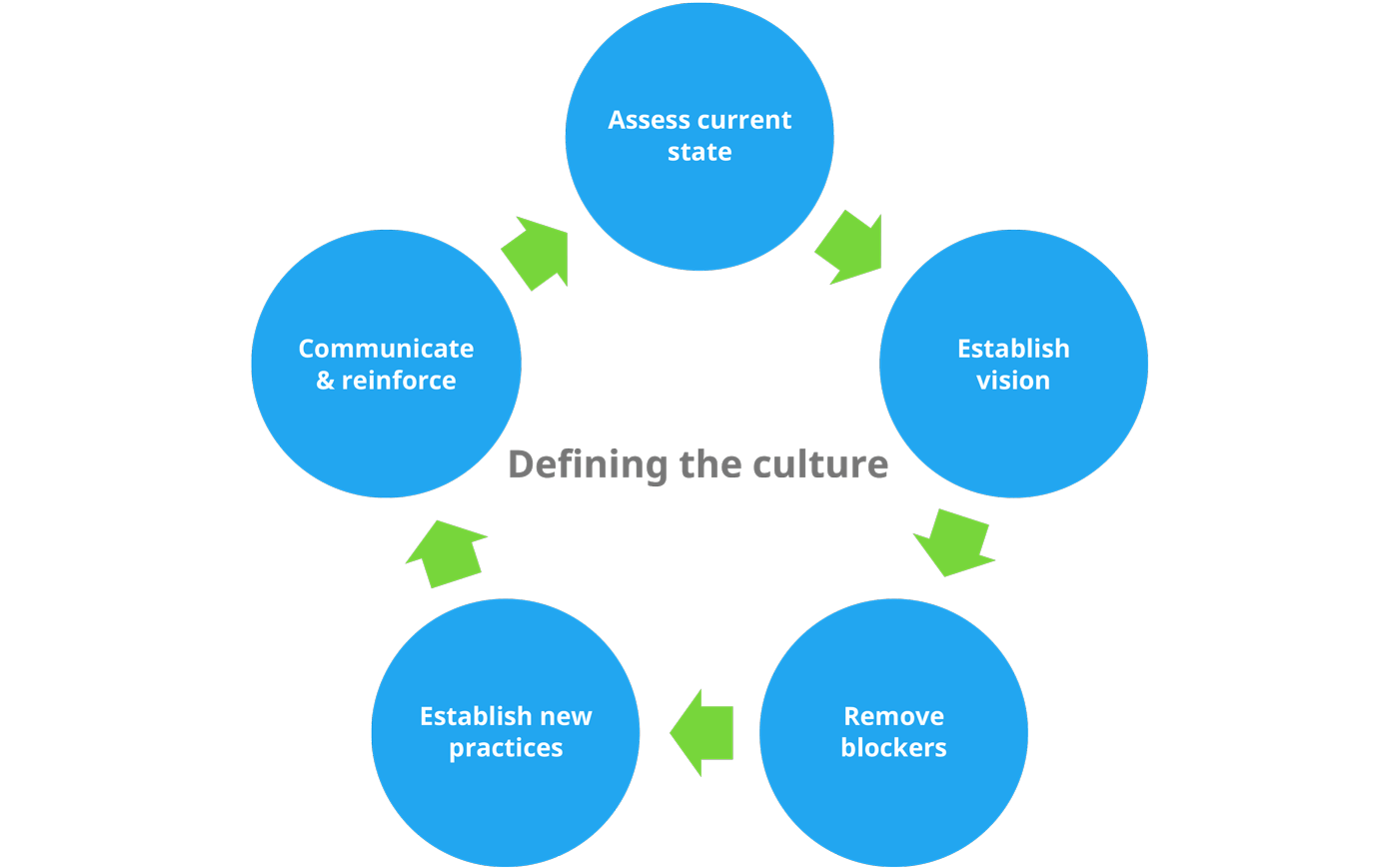Company Culture Defines You – But How Do You Define It?
The concept of company culture is all the rage right now. As competition for both top talent and loyal customers gets fiercer by the day, business leaders are looking for ways to distinguish themselves from the crowd. And culture has quickly become a way for some companies to do this.
However, the effects of company culture on business are still up for debate. After all, performance is still measured by financial results, and it’s often hard to understand exactly how culture affects these. The vast majority of business leaders agree culture is a potential competitive advantage, some 82 percent according to a 2016 Deloitte Human Capital Trends study, yet it remains unclear exactly what this advantage is.
This shouldn’t really be the case, though. John Kotter and James Heskett’s seminal 1992 book took a look at 207 companies across 22 different industries over a period of 11 years. What they found is that companies do better when their culture:
- emphasizes customers, investors and employees; and,
- is appropriate for its business environment and adapts to change.

Knowing this, though, begs the questions: Why does it still feel like company culture is something secondary? Why aren’t business leaders doing more to shape and define company culture?
Well, in my experience, it’s because they’re not completely familiar with how their actions affect it. Some misunderstandings about what culture is, how it develops and how it affects their relationships with employees and customers cause leaders to make some false conclusions about culture.
I hope to clear these up a little so that you can see exactly how your actions affect the formation and adaptation of culture, and how this can, in turn, have a radical effect on the performance of your business. I will also provide some tips and ideas for how you can start right away on developing a strong, effective company culture that will set your business apart from the competition.
Table of Contents
What exactly is culture?
Before we can discuss how your actions affect culture, it’s important to define exactly what it is we’re talking about. Defining company culture isn't easy as the concept is rather abstract, and it will change depending on what it is you’re discussing. The most widely-cited definition of business culture comes from Edgar Schein, a professor at MIT’s Sloan School of Business. He describes culture as:
A pattern of shared basic assumptions that the group learned as it solved its problems of external adaptation and internal integration, that has worked well enough to be considered valid and, therefore, to be taught to new members as the correct way to perceive, think, and feel in relation to those problems.
This feels awfully academic, so let’s simplify it a bit: Culture is the way in which things get done. It’s a combination of implicit and explicit rules and norms that help determine people’s behavior and responses to certain situation.
There are two things I’d like to point out though from Schein’s definition: external adaption and internal integration. Including these in the definition implies that the development of culture is equally dependent on what goes on inside the business as outside.
This is important as it helps shed light on why some business leaders still question the significance of culture. Going back to Kotter and Keskett’s study, culture was found to positively affect performance when it was focused on the right people (and was suitable for them) AND when it was suitable to the environment. Getting just one of these right won't cut it.

A weak company culture can sometimes be better than a strong one that is wrong for the environment in which the business operates. This essentially means that not paying attention to culture is “safer” than doing so but being wrong about it.
But to mistake this for the idea that culture is not important is just plain wrong. While doing nothing might hurt you less than making a mistake, not doing enough to develop the right culture is closing the door on potential growth. You’re essentially leaving money on the table by not giving enough importance to culture.
There are, however, other ways having an effective company culture strengthens you as an organization.
Think of how much time you spend reviewing processes, seeking out best practices and going through resumes and personality profiles to find the next best hire?
It’s impossible to count all the hours that get sunk into these tasks. When you focus a lot of energy on this part of your job, you end up feeling a lot more like a manager than a leader. You dedicate so much time to making sure people are doing things right that you don’t have enough time for those bigger-picture projects that could really transform the company.

Companies with strong and appropriate cultures don’t waste leadership time on the minor stuff. Smaller, day-to-day tasks simply get done, and they get done right. There are systems in place for getting past the mundane so that more energy can be focused on bringing the company to the next level.
You need to invest time and energy into building a strong culture now, but once you’re there, the potential this brings to your business is unmatched.
Let’s take a look at how you as a leader can help foster the right culture for your business.
Culture doesn’t just happen
One of the misconceptions with culture is that it is something that is out of our hands. At times it can certainly feel that way. Path dependence—the idea that once we start doing something we continue to do it just because it’s what we’ve always done—is a powerful driver of culture. But, to assign the development of culture entirely to this, underestimates the power we as individuals have to affect it.
In some respects, culture will develop organically. People are trained to operate autonomously, and as the environment around them changes, they will adapt the way they do things to fit it. This is where the “it’s the way we do things” idea comes from. But this isn’t always a positive thing.
If you haven’t brought in the right people and taken the steps to properly outline the culture you want to build, people may adapt to what’s easiest, or what’s fastest. Or they may simply revert to what they’ve always done, stagnating cultural development and freezing the company in its tracks. How many times have we heard a company’s failure attributed to its “failure to adapt", or in other words, it's failure to sustain an innovative organizational culture.
If you haven’t brought in the right people and taken the steps to properly outline the culture you want to build, people may adapt to what’s easiest, or what’s fastest.
Kodak is a great example of this. They developed a digital camera back in the early 1970s but chose not to pursue this technology because of the monopoly they had on the print film industry. Short-term profits won out over innovation and long-term success. And while they did make a lot of money on their digital camera patent, how many people do you know today who own a Kodak camera? Probably not many; they filed for bankruptcy in 2012.

Failures like these occur when culture ceases to be dynamic. Innovation wasn’t valued highly enough at Kodak, and so while there were large investments in R&D, people felt no urge to try and take things to the next level. And this can be traced back to leadership. If those responsible for determining the direction of the company aren’t doing enough to stimulate cultural development, it will stagnate, and the company will fail. It’s as simple as that.
One of the most important ways you affect cultural development is in how you reward and incentivize behavior. You may say out loud that you want to develop a culture that prioritizes the customer, but putting the customer first sometimes costs more money. You may need to make some concessions when you do things wrong, or you may need to spend a little extra to make sure customers are taken care of.
Yet if you turn around and offer promotions and bonuses to employees who find ways to cut costs and save the company money, regardless of how this affects the customer, then what message are you sending to your employees?
Without saying it, you’re indicating that your culture is one that values cost reduction over customer satisfaction. It’s possible to do both, of course—cutting costs will certainly please customers—but there’s a nuance here that can end up having a big effect on your culture if you’re not careful.

If your actions as a leader don’t align with the cultural goals you hope to achieve, then culture will in fact develop on its own, but in a different direction than the one in which you want to take your company. Actions matter much more than words.
The same thing applies for choosing leaders. You’re responsible for putting together teams that are going to help the company deliver to its customers, so you need to be careful about who you choose. These individuals will be responsible for downloading your vision into the day-to-day, and if they don’t have experience in creating the type of culture you hope to develop, then the company is going to stray from the direction you hope to take it.
Culture makes hiring much easier
“People are your most important resource”. You’ve likely heard that a million times, and it’s even more likely you’ve seen this play out in your own company. Recruiting and maintaining the right talent is essential for the success of your business. But this is much easier said than done.

In the hiring process, though, culture works in two ways. First, it makes it far easier to determine if someone is a good fit. You may bring someone in for an interview based on their experience, qualifications and the strength of their recommendations, but when talking with someone, you should be working to find out if they fit in with the way company does things. This is why it’s so important to have a clearly defined culture; it will help you ask the right questions to prospective employees to determine the chances they will be a good fit.
Second, culture works as a force of attraction. If you have a clearly defined culture, it will show, and people who mesh with it will be drawn towards your company. And the opposite is true, as well. Those who might not be a fit will be pushed away, which again saves a lot of time for everyone.
The now world-famous Netflix Culture Deck is a perfect example of this. The company’s founder, Reed Hastings, learned from previous business ventures that hiring people based purely on their experience and qualifications was not a recipe for long-term success. Doing this runs the risk of the company getting bogged down in bureaucracy and losing track of its core principles.
But if you as a leader aren’t clear or certain about the type of culture you hope to instill in your company, then how can you expect those working for you, or those who hope to work for you, to know what you’re looking for? Simply put, you can’t.
It’s hard to put numbers on this concept, but we all know how valuable it can be to have the right people. Your role in bringing these people in goes beyond just reviewing resumes and interviewing candidates. You need to have a clear vision of what you want the company to look like and where it is heading. From there, the right people will find you, the wrong people will look away and your company will be healthier and more successful as a result.
Culture impacts branding
There is no doubt about the significance of having a strong brand. Quality, well-respected and easy-to-identify brands make more money. And in today’s competitive marketplace, it’s even more important than ever, as your brand is often what will distinguish you from the crowd and give people reason to stay loyal to you in the face of constant courting from others.
However, branding is often considered to be an issue of marketing and communications. And it is, as this is ultimately how you’re going to get your message out to people.
But culture is what stands behind your brand. It’s one thing to say what you are, but it’s quite another to actually be that way. If your brand is nothing more than an image, and your culture doesn’t reinforce it, people will quickly see this, and your branding messages will begin to resonate less.
It’s one thing to say what you are, but it’s quite another to actually be that way.
Of course, though, this can also work in the other direction. If company culture reinforces what you’re trying to accomplish with your branding efforts, you can expect your messaging to carry more weight with customers.
We’ve all experienced this as consumers. How many banks or other financial services institutions out there say that their number one priority is pleasing customers?
But then how many out there charge unnecessary fees, or have inefficient automated phone operators when you call up to ask a question or resolve a problem?

These systems were not put in place by accident; they were decisions made by people within the company, and there’s a good chance this happened because, even though they outwardly say customer service is a priority, the company culture is one that focuses on cost reduction and the maximization of profits.
Overcoming this is a challenge. After all, the purpose of any business is to make money. But it’s your job as a leader to figure out what else are you trying to do. What do you add to customers’ life beyond the service you offer, and then how do you communicate this to relevant parties?
Determining your culture, hiring people that support it, and then incentivizing certain behavior while discouraging others will help to bring this aspect of your company to the forefront, and this will seep out into all the interactions you have with your customers.
Company culture can either reinforce or erode branding efforts. It’s up to you as a leader to develop an environment that supports as much as possible your overall business goals.
Culture is hard to change
This is probably one of the easiest things to understand about culture. We see it in our everyday lives. Just think about how long it takes to instill meaningful cultural change in a country. Sexism and racism have been pressing social issues for decades, yet we’re still fighting both on a daily basis. Progress has been made, sure, but it’s been slow, and there’s still lots of work to be done.
The same thing happens in a business or organization. However, the scale is much smaller. And this just serves to highlight the importance of your role as a leader. You can inflict cultural change, but only if you make it a priority.
Making an impact on the way things get done requires action. And you need to go beyond just talking about what you’re going to do. You can outline your core values and set up policies or practices designed to create culture change, but unless you actively pursue this transformation, it simply won’t happen, at least not in the way you intend.

Hastings’ experience with Netflix shows us this. If you don’t make your principles, values and culture a priority, it will show through in everything you do. Your systems, management and culture all need to align, and this won’t happen unless you make a concerted effort to bring everything together as one.
It starts with understanding where you want to go and who you want to be, but then it requires action, from both you and your employees. Making this a priority will help push through cultural change and will begin to give your company a real competitive advantage.
But remember that this is not something that will happen overnight. There’s a lot more that goes into culture change than just wanting it. You need to make the right moves and then have the perseverance to push forward even when things don’t go well.
A good example of this is Microsoft. Five years ago, Microsoft was in trouble. Internally fractured and rapidly losing relevance to the other tech giants, something needed to happen. By bringing in Satya Nadella to be the CEO, Microsoft signaled it was ready for a major change, and the first thing he did was focus in on culture, asking, “What is in our soul? What would the world look like if we disappeared?” It’s hard to imagine a world without Microsoft, but when Nadella took over, it was a real possibility.

The results of this thinking were some major changes in the organization. Business units were consolidated, and Microsoft switched its focus towards innovating cloud and AI solutions, instead of just churning out Office and Windows updates to keep profits high.
This is a major shift, and it’s one that’s still going on. What Nadella did would seem to be working as Microsoft is now undeniably one of the leaders in the area, but there’s obviously still quite a long way to go.
Part of being a good leader is having a strong vision and not giving up on it. This will often be difficult, but it’s your job to see further down the road and know this difficulty is simply part of the journey you and your company must take to be successful.
Final thoughts
It’s puzzling to me why there is still so much debate about the value of culture to a company’s performance. Perhaps it goes back to the idea that a weak culture doesn’t necessarily hurt you, but a strong culture that’s wrong can destroy you.
But I think the more likely culprit is that it has more to do with business leaders misunderstanding how culture permeates throughout the organization and the role you play in helping determine it and grow it within the company.
The first thing you need to do is take stock of what kind of culture you currently have. Then, envision what you would like to have. This will help you identify what you're doing well and what needs to be improved. If you can’t see it in your mind first, it’ll never become reality.

Then, start looking at your business from top to bottom. Do the systems and processes you have in place reflect this vision? Where could you be doing better?
Take a look at the organization of your business. Is it set up in a way that will facilitate the type of culture you’re hoping to bring to the company? What changes can you make right now that would help begin the shift towards the culture you want to have? And what are the changes you would like to make but need time to implement?
Figuring out the answers to these questions will help you devise an action plan for introducing cultural and organizational change. From there, you’ll need to adapt as you go, but make sure you stay true to your vision no matter how far from reality it may seem. Culture change starts with you, and it starts today!

Interested in Innovation and Leadership?
Subscribe to our blog to get the latest stories on innovation, leadership and culture straight to your inbox.




.png)


